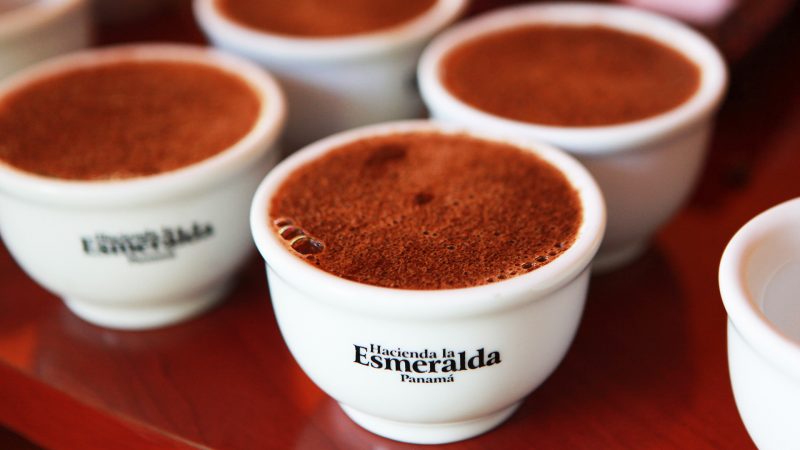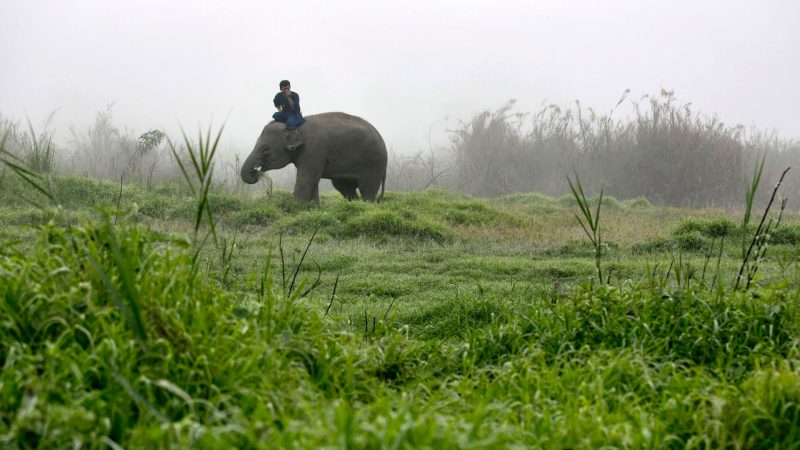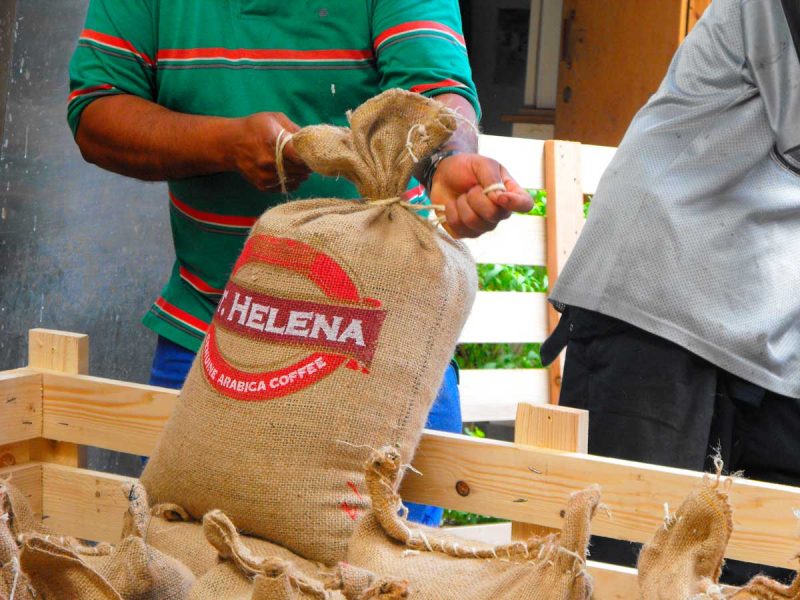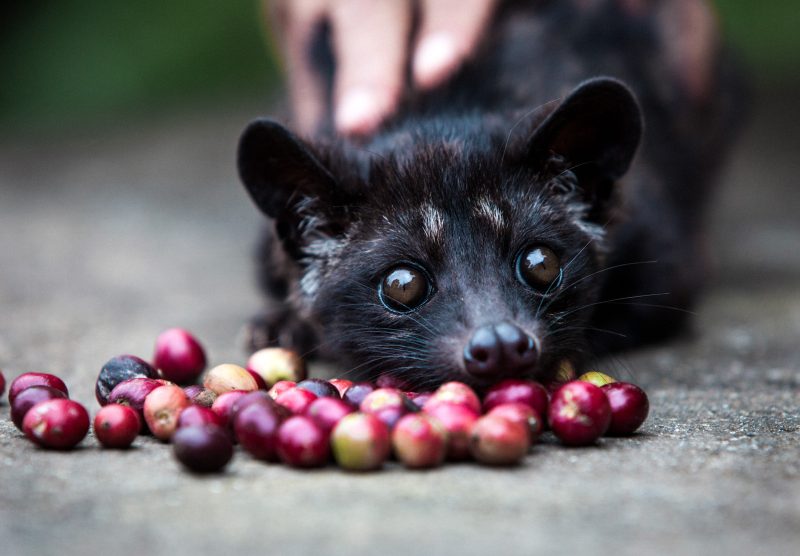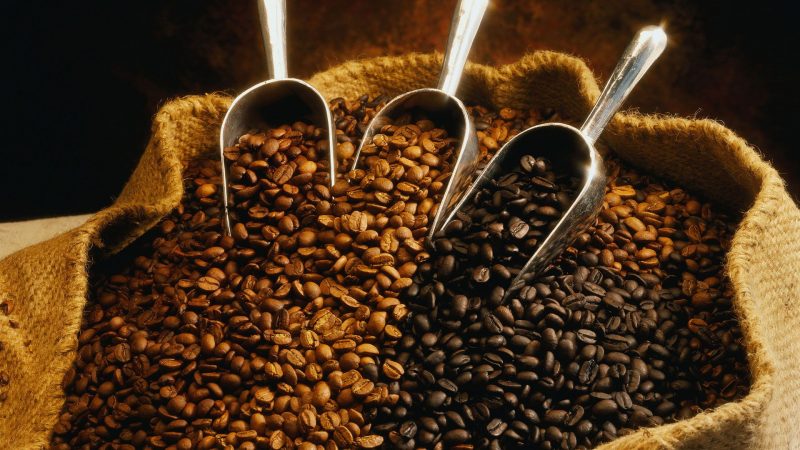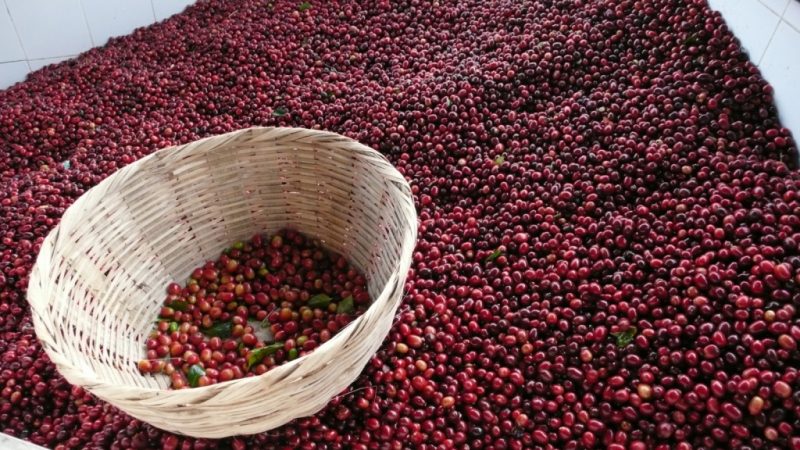What kind of coffee is the most expensive in the world, what is the secret of its high price? Inveterate coffee lovers are ready to shell out any money for a cup of an exclusive drink made from arabica beans. However, the production technology of some types of coffee can greatly surprise and shock unprepared lovers.
Material Content:
- 1 Hacienda La Esmeralda (Panama)
- 2 Coffee Black Tusk or Black Ivory
- 3 Jamaican Blue Mountain Coffee (Blue Mountain)
- 4 Drink from St. Helena
- 5 The most expensive kind of coffee from the litter - Kopi luwak
- 6 Hawaiian Coffee Molokai Coffee
- 7 Brazilian drink Fazenda Santa Ines
- 8 Coffee from Salvador Finca Los Planes
- 9 How much is the most expensive cup of coffee in the world
Hacienda La Esmeralda (Panama)
The Hacienda la Esmeralda variety rightfully takes its place among the most elite and expensive coffee varieties. It grows on the slopes of the sleeping volcano Baru, located on the Talamanca mountain range, in the western part of Panama. These areas with their ecosystems are recognized as ecologically clean zones that have not been affected by humans. It was here, since 1996, on the Hacienda La Esmeralda farm that the first Esmeralda coffee trees were discovered. Since 2000, the cost of coffee of this variety has been constantly growing, and reached its peak at $ 350.25 per 1 pound (453 g). What explains such a high cost of this variety?
- Firstly, coffee beans are grown in an ecologically clean area, with optimal climatic conditions, which gives the coffee beans certain taste characteristics.
- Secondly, ripe coffee beans are harvested by hand. Pickers carefully select only the reddest and largest berries, discarding fruits with flaws.
- Thirdly, sufficient labor-intensive production technology is used to obtain perfect coffee beans. Initially, the grains are separated from the pulp by the pressure of water, washed, and dried in the sun.Then, maintaining the optimum temperature of 38 ° C, the grains undergo final drying. Dried grains are stored in a wine cellar, maintaining a certain level of humidity and temperature for up to 2 months. And before shipment, the grains are shaken, and to peel off the shell, they rub together.
- Fourth, coffee beans are sorted before being sent to the buyer. At the request of the buyer, they can be calibrated by size or density.
Coffee of this variety has a unique taste, it combines notes of chocolate with fruit and spicy shades.
Coffee Black Tusk or Black Ivory
Black tusk or coffee (Black Ivory) is made in Thailand from local arabica beans. This type of coffee has received its uniqueness thanks to production technology and optimal taste. So Black Ivory coffee is not bitter, even if it is very strong. This effect is achieved thanks to a special production technology. Harvested arabica beans are fed to elephants, along with bananas, sugarcane and other regular foods. In the process of digestion, the enzymes of the animal’s gastrointestinal tract break down the plant protein contained in the grains, and the grains themselves acquire a fruity aroma. In addition to fruit notes, chocolate, spicy shades prevail in the bouquet of the drink. The process of grain fermentation helps eliminate bitterness. Further, workers select undigested and undamaged grains from the animal litter and thoroughly rinse them.
The average cost of a pound of coffee will be $ 550. The high price is due to the fact that for the production of only one kilogram of whole and intact beans, the elephant needs to eat about thirty-three kilograms of coffee berries.
Jamaican Blue Mountain Coffee (Blue Mountain)
Jamaican Blue Mountain coffee (Blue Mountain) got its name from the place where it is grown - the eastern slope of the Blue Mountain in Jamaica. This type of coffee has excellent taste characteristics and a rich aroma. Depending on the degree of roasting, its taste changes from soft with a fruity aftertaste to strong, with a predominance of nutty notes. Due to the fact that coffee trees grow in high mountains, coffee beans have a longer ripening period, which helps to reduce the bitterness of the drink. The high cost of grains is due to:
- The limited territory in which coffee trees grow. There are a number of lands with a certain soil composition, elevation above sea level, and climatic characteristics due to which the harvest collected from coffee trees can be attributed to the Blue Mountain variety.
- The complexity of the assembly process. Coffee berries are picked manually by farm workers, which improves product quality and culls unripe berries.
- Manual sorting. Grains are also sorted manually; grains are selected by size.
However, it is not so easy to buy real Blue Mountain coffee. This is the most often falsified arabica variety, so you should buy coffee beans only from certified sellers with all the supporting documents. Basically, Blue Mountain coffee is exported to Japan, and only a small part is shipped to England, due to the fact that it was Japan that made a great contribution to the development of the coffee industry in Jamaica. The average price of 1 pound (453g) of coffee is fifty dollars.
Drink from St. Helena
Coffee grown on the island of St. Helena is one of the first varieties of arabica coffee. It was here that the first coffee trees planted back in the 17th century continue to bear fruit to this day. Repeated attempts to plant new trees were unsuccessful therefore, coffee trees grown in this small island territory have never been selected. Coffee made from these arabica beans was Napoleon Bonaparte's favorite drink. It is distinguished by a strong, thick aroma, a long-lasting aftertaste and a bright bouquet.The drink is characterized by a predominance of fruit and citrus fruits, chocolate and caramel notes, and moderate acidity. The average price of a pound of grains will be about $ 80.
The most expensive kind of coffee from the litter - Kopi luwak
The cost of coffee beans of the Kopi Luwak variety varies from 250 - 1200 dollars per kilogram. And this is another type of coffee that is obtained from animal excrement. This difference in price is due to the type of production. The most expensive kopi luwak coffee is obtained in the wild. Unlike Thai Black Ivory, whose coffee beans are purposefully fed to elephants, these wild berries are eaten by wild musanga. These are small predatory animals of the Wyverns family. Moving through the trees, due to their natural subtle sense of smell, they choose only the ripest coffee berries as food. The coffee berry, passing through the animal’s gastrointestinal tract, is digested, and with the help of enzymes, protein is split and the beans are fermented. Subsequently, the solid grain is sent to the litter, mixed with cibetin - the release of the anal glands of the animal. It is cibetin that gives grains a specific aroma. People get undigested coffee beans from the litter, wash and dry them. The high price is due to the difficulty of collecting and a small number of grains. Coffee from the litter is distinguished by the absence of pronounced bitterness of the drink and its specific taste.
However, some of the coffee is produced industrially on specialized farms in which musangs are kept in captivity. Under such conditions, coffee beans are fed to animals, and their usual diet differs from the diet of wild relatives, which affects the quality of the resulting grain. In addition, some manufacturers artificially flavor coffee with cybetine. Such coffee costs an order of magnitude less than its counterpart.
Hawaiian Coffee Molokai Coffee
Molokai Coffee is made from coffee tree beans grown on the volcanic soil of the Hawaiian Islands. Alpine conditions contribute to the slow ripening of berries, due to which coffee has a mild aroma with a predominance of floral notes. This variety is inferior in price to previous types; its average price is 51 dollars per pound (453 g).
Brazilian drink Fazenda Santa Ines
The birthplace of Fazenda Santa Ines is Brazil. Due to the hot climate and fertile soils and long daylight hours, coffee beans mature well. A special way of roasting gives a drink made from this arabica variety a light chocolate-citrus hue. The coffee variety gained its popularity after it won a prize in the Quality Cup. Beans, on coffee plantations, like many years ago, are collected and processed manually. Fazenda Santa Ines is mainly shipped to North America. The average price of a pound (453g) of coffee is fifty dollars.
Coffee from Salvador Finca Los Planes
The homeland of Salvadorian coffee Finca Los Planes is the province of Chalatenango. It is here, on a family plantation, that they produce premium Los Plains coffee, which has repeatedly received high marks at the international Quality Cup exhibition. Coffee has a floral-caramel aroma, some tasters note notes of cocoa in the aftertaste. The average price of a pound of coffee of this variety is $ 40.
How much is the most expensive cup of coffee in the world
How much is the most expensive cup of coffee in the world? It all depends on the type of production and variety of grains. If we consider the exclusive and original variety Kopi Luwak, collected in the wild, then a cup of coffee from these beans will cost an average of $ 70. For a long time, this particular variety was the most expensive in the world; however, so long ago, Bespoke Coffee produced two varieties of Rubin and Diamond. A cup of drink from these exclusive varieties will cost $ 100 and $ 500, respectively.


